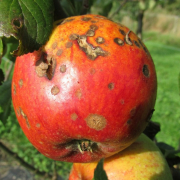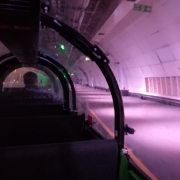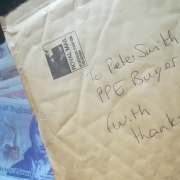UK National Audit Office Looks at PPE Again – Just Why Did We Buy So Much?
The second UK National Audit Office report on pandemic procurement was issued recently. Titled “The supply of personal protective equipment (PPE) during the COVID-19 pandemic” it focuses entirely on PPE. It has received less media coverage than its predecessor, which looked at wider procurement issues, although it too had a lot of PPE-related content.
That reduced attention was probably because it lacks some of the obviously newsworthy headlines the first reported generated, around contract awards to firms such as Ayanda Capital and Pestfix, who have been in the news for a while, and discussions of potential conflict of interest at Ministerial level. But that’s a shame, because there are some very interesting findings in the more recent report too, although it still leaves a couple of key questions outstanding.
The report gives more visibility of the process as the pandemic struck in the spring. It clarifies some of the failures we saw around the existing pandemic stockpile, which was a combination of sheer incompetence and a more forgivable lack of preparedness for this type of virus. Once it became clear that the normal NHS channels, such as Supply Chain on the procurement side and Unipart for delivery couldn’t cope, we saw Lord Deighton getting involved, bringing in people he knew (including HR support through another questionable contract). We know Clipper won a huge distribution contract, also without any competition, although they seem to have done a pretty good job all in all.
The Parallel Supply Chain buying operation was set up in late March, with one team looking at extending UK manufacturing and another sourcing PPE globally. McKinsey supported the Department in putting together a demand model to predict how much PPE was going to be needed. The teams then went off and agreed contracts with some of the thousands of suppliers who had expressed interest – some of whom came though the “VIP route”, already exposed previously.
That takes us into our three big outstanding issue though.
- We still don’t understand the process by which suppliers were selected from those that put themselves forwards. Why did Ayanda Capital win a contract for £250 million? Why not £50 million? Or indeed £500 million? Why did 47 suppliers win contracts, with value ranging from less than a million to the hundreds of millions – was there an overall strategy of some sort, or was it literally the buyers accepting the first offers that were made that got through the approval process? We know that process was flawed early on by the lack of real due diligence, but we’ll park that for the moment. But the process used for selecting suppliers and determining quantities per contract is still opaque.
- Why has the demand model turned out to be just so inaccurate? We are now in a situation where, as NAO says, if the recent rate of use of PPE continues, then the 32 billion items that had been ordered by the Parallel Supply Chain by 31 July could last around five years (with variations across the different types of PPE). The Parallel Supply Chain’s initial estimate of the PPE that would be required nationally anticipated an enormous increase compared with pre-pandemic use, but actual use has been lower than this (although still far higher than pre-pandemic use). What went wrong?
- There is still some doubt over how much PPE is unusable or at least does not meet original specification. From the report – “The Department (of Health and Social Care) told us that it had identified 195 million items which were potentially unsuitable, which was equivalent to around 1% of the items it had received to date. However, it has not provided us with sufficient information to be able to verify these figures because, it told us, this would compromise its ability to resell the PPE”. In other words, NAO can’t be sure the Department isn’t fibbing.
Coming back to the demand issue, did the model assume that the absolute peak of PPE usage in March / April would continue forever, and that there would be no reduction in cases as we went into lockdown? Was it the move away from putting patients on ventilators, as clinicians learnt more about optimal treatment pathways? Were contingencies built on top of contingencies? I understand that the model did initially include the devolved countries (Scotland, Wales, N Ireland) who then went their own way on PPE, but that factor isn’t enough to explain the huge quantities ordered. It’s a shame the NAO report didn’t dig onto this issue a little more deeply, I feel.
By the time that the PPE team was “professionalising” through the summer and bringing in more people with real public procurement experience, I’m told that it wasn’t really a buying job any longer. The vast majority of the contracts were placed in May and June. Through the autumn, teams have been focused more on how to manage this huge over-ordering situation. That’s one of the reasons why UK ports are struggling – they are clogged up with billions of items of PPE, ordered earlier but for winter delivery.
My prediction is that soon, there will be stories of suppliers being paid off – they’ll get the majority of the contract value paid but be told not be bother supplying what is not yet delivered. There is also a very serious problem here, as a range of new UK- based manufacturers were encouraged to move into this market. But if there is 5 years’ worth of stock (or committed orders) already, who needs more from these possibly expensive UK manufacturers?
I do have sympathy with the people involved here. Predicting demand in the peak of the pandemic must have been a difficult task, that is undeniable. But how did smart civil servants and McKinsey consultants (charging a fortune, no doubt) get it so wrong? That demand model has cost the taxpayer billions. We have bought far too much stock, and even if it does get used eventually, it was bought at the top of the market, at prices several times the norm in many cases.










I suspect that the over-ordering of PPE was/is due to the many unknowns with this virus, and in particular how it would behave over multiple waves. With the 1918 pandemic, the second wave in particular was much, much worse than the first wave, and I think they were guarding against this possibility. PPE you have but don’t need is better than needing it but not having it.